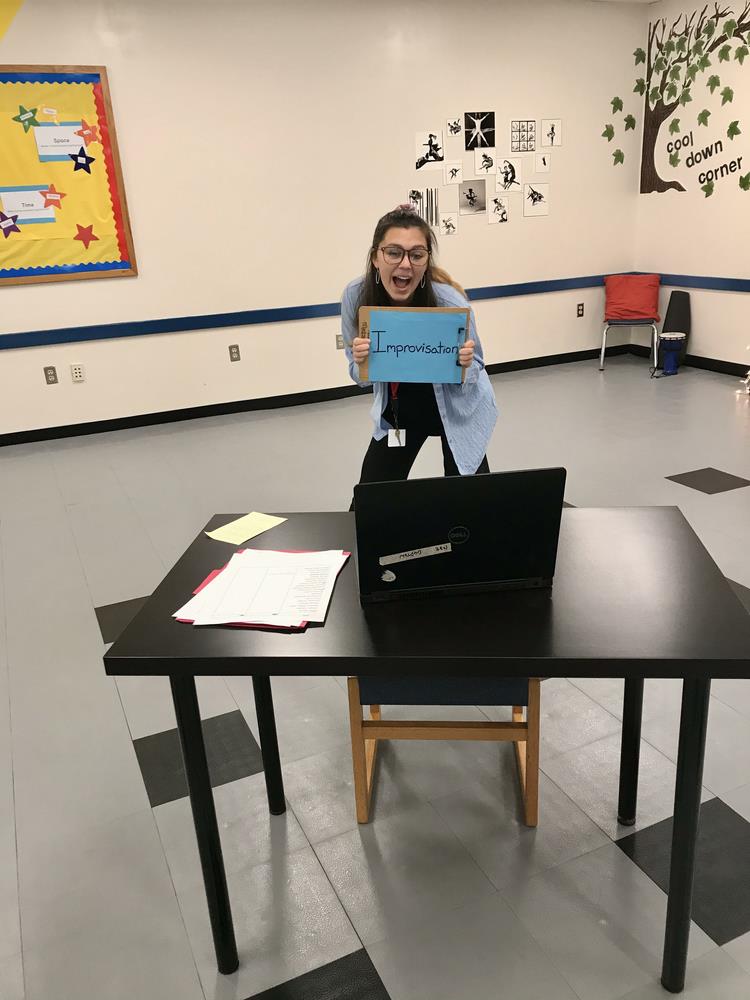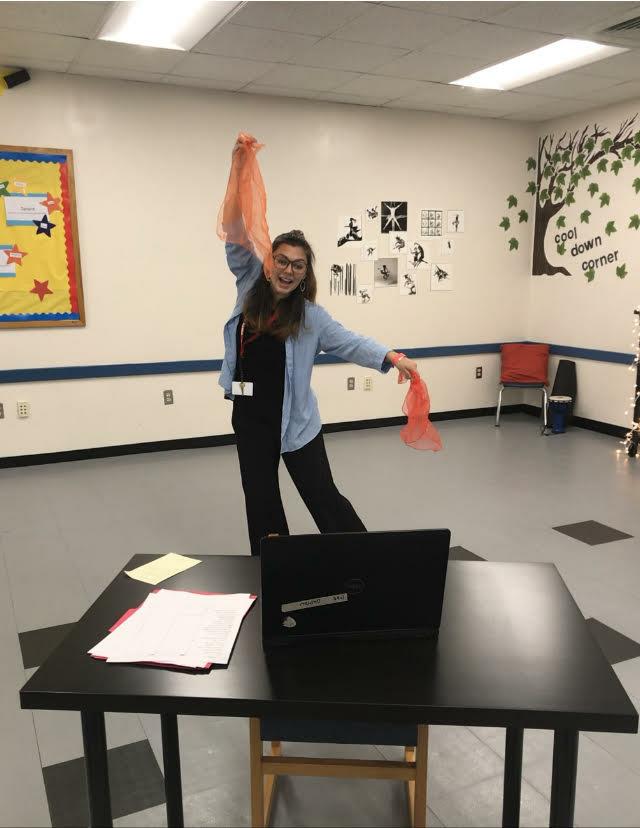From time to time, NDEO features guest blog posts, written by our members about their experiences in the fields of dance and dance education. We continue this series with a contribution by Kate Gupton, Dance Teacher at North Graham Elementary. Guest posts reflect the experiences, opinions, and viewpoints of the author and are printed here with their permission. NDEO does not endorse any business, product, or service mentioned in guest blog posts. If you are interested in learning more about the guest blogger program or submitting an article for consideration, please visit this link.
Considering post-COVID dance education
Kate Gupton, Dance Teacher at North Graham Elementary

We are entering a new age in education. Second graders can navigate Zoom calls, high schoolers are working full-time jobs while in school, and the demands of being a well-adjusted adult are changing. For many of us, the question is “When will I be able to return to normal?” But what if we instead shifted the question to “How can I use this time to reset my classroom to be more equitable and effective for students?”
I believe that our goal should not be to return to normal. Our education system is failing many students. In dance, and across education as a whole, we are perpetuating a broken system that fails to accommodate the needs of every student. We only need to look as far as the inequality in test scores, suspension rates, graduation rates, or the achievement gap to know that the current system doesn’t work for everyone.
What can we do to change education for good in a post-COVID world? How can we take into account students' 21st century needs, and their new technology skills to change the nature of how our classrooms and our schools run? How do we create effective and lasting equity in our classrooms? COVID and the events of the past few months have shown us just how vulnerable a large portion of our society is. We have watched as many of our students’ housing situations became unstable. Over the past months, many of our students experienced food insecurities. And we have listened as many of our students expressed that they live in a place where they are unsafe merely because of the color of their skin. Studies show that one-half to two-thirds of our students experience trauma before they graduate high school. It is time for dance educators to allow trauma-informed teaching and social-emotional needs to take a front seat.

A great dance classroom is a sanctuary for students. It can be a place where students can express themselves in a judgment-free zone and where they can process the ever-changing outside world. A bad dance classroom can be a place of competition, social hierarchy, and self-deprivation. In a bad dance classroom societal hierarchies are mirrored and students see manifestations of systemic oppression within the classroom norms. The reality is most of us fall somewhere in the middle.
In a post-COVID world, the middle will simply not cut it. Many of our students are experiencing the hardest school year of their lives right now. They are facing problems with which adults would struggle to manage. Mediocre dance education, and mediocre education in general, can no longer be acceptable. As dance educators, we need to engage in critical self-reflection before our students return. How are the inequities in society mimicked in your classroom? Who at your school gets to take dance? How are you perpetrating micro-aggressions toward your students of color? What are you doing to meet students’ social-emotional needs every day? How are you allowing current events to affect your lesson plans? How are you fostering positive relationships in your classroom? Good teachers will look at these questions and say they have already considered them in their classroom procedures and pedagogy. Great teachers will look at these questions and reconsider their classroom procedures and pedagogy. Our students need great teachers right now.
Asking these kinds of questions can be difficult and uncomfortable. Oftentimes the answers require research and result in the realization that we are not perfect in our classroom. We owe it to our students to be great teachers. This does not happen overnight. It requires rigor and constant re-evaluation. Being a great teacher is a job that does not stop when the student leaves. Being a great teacher requires us to look deep within ourselves at our own biases and shortcomings. As a teacher, you are not expected to be free of biases and shortcomings. But you are expected to be actively seeking them out and doing everything in your power to mitigate them. As humans we are flawed. As teachers we need to be honest about that with our students. The hierarchy in a dance classroom can be so suffocating for students that they feel powerless. Gone are the days of the didactic dance teacher.
Creating an environment centered around student voice is crucial to giving students the tools they need to survive. I am encouraging you to uplift students' voices. To take into account the whole student and all that student carries with them. This practice is a challenge that extends beyond our classroom walls. Host student government meetings, join the leadership committee at your school, and challenge your coworkers to implement change in the school as a whole. A great dance program can create a culture of social awareness that permeates into every part of a school. Arts in education hold the enormous power to reshape a students experience in school. Let’s not look at this time as a setback but rather as an opportunity to harness all that arts in education can do.
 Kate Gupton is the current dance teacher at North Graham Elementary school in Graham NC. She is a recent graduate of the University of North Carolina at Greensboro with a BFA in Dance Choreography and a K-12 teaching license.
Kate Gupton is the current dance teacher at North Graham Elementary school in Graham NC. She is a recent graduate of the University of North Carolina at Greensboro with a BFA in Dance Choreography and a K-12 teaching license.